While semi-hydroponics is known for its innovative approach to growing plants without traditional soil, the heart of its success lies in the choice of potting mix. The right semi-hydro potting mix can significantly enhance plant health, growth, and resilience.
In this comprehensive guide, we will delve into the variety of semi-hydro potting mixes available, such as LECA, Lechuza Pon, Perlite, and Pumice. Each of these mixes offers unique benefits and can be tailored to meet the specific needs of different plant types.
Understanding these potting mixes’ characteristics is crucial in creating an optimal growing environment, ensuring your plants not only survive but thrive in a semi-hydroponic system.

Advantages of Semi Hydro Potting Mixes
Semi hydro potting mixes offer several advantages:
. Enhanced Root Health:
- Semi-hydro potting mixes promote superior aeration, preventing common issues like root rot.
- The improved air circulation around the roots facilitates better oxygen uptake.
2. Consistent Moisture Control:
- These mixes provide a balanced moisture environment, ensuring plants receive water without being waterlogged.
- The ability to retain and release water as needed helps in maintaining optimal hydration levels for plants.
3. Reduced Risk of Pests and Diseases:
- The soilless nature of these mixes minimizes the risk of soil-borne pests and fungal diseases.
- Offers a cleaner and more hygienic environment for plant growth.
4. Improved Nutrient Delivery:
- Allows for a more controlled release and uptake of nutrients, ensuring plants receive what they need for growth.
- Some mixes come with added nutrients or have properties that help in better nutrient retention.
5. Versatility and Suitability for Various Plants:
- Suitable for a wide range of plants, from moisture-loving tropicals to drought-tolerant succulents.
- Can be customized or blended to suit specific plant needs and preferences.
6. Eco-Friendly and Sustainable:
- Many semi-hydro mixes are reusable and long-lasting, reducing waste.
- Made from environmentally friendly materials, contributing to sustainable gardening practices.
7. Improved Plant Growth and Vigor:
- Plants often exhibit more robust growth due to the optimal growing conditions provided by these mixes.
- Enhanced flowering and fruiting can be observed in many plant species.
8. Convenience and Low Maintenance:
- Simplifies the watering process, often requiring less frequent watering than traditional soil.
- Easier to manage and less messy than soil-based systems.
9. pH Stability and Buffering:
- Many semi-hydro mixes help in maintaining a stable pH, which is crucial for plant health.
- Reduces the need for frequent pH adjustments, simplifying plant care.
10. Visual Appeal and Monitoring:
- Clear containers used in semi-hydro systems allow for easy monitoring of root health and moisture levels.
- The aesthetic appeal of these systems can enhance the overall look of indoor plant displays.
Types of Semi Hydro Potting Mixes
1. LECA (Lightweight Expanded Clay Aggregate):
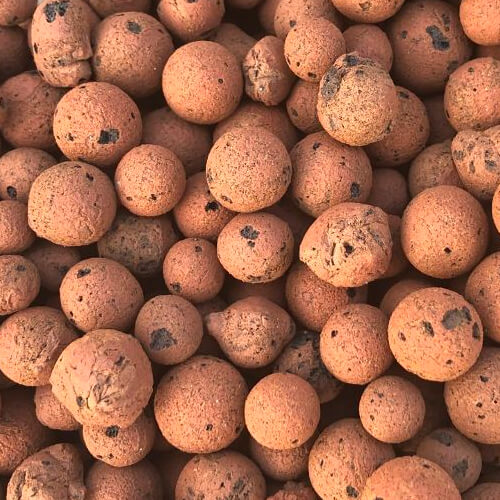
- How it Works: LECA consists of small, rounded clay pellets. They are created by heating and expanding clay, forming a porous structure.
- Benefits:
- Excellent Aeration: The porous nature allows for ample air circulation around the roots.
- Moisture Control: LECA can absorb and release water as needed, providing consistent moisture.
- Reusable and Clean: Being inorganic, LECA reduces the risk of pests and is easily washable for reuse.
- Ideal For: Almost all houseplants.
- Watering: Monitor water levels in the reservoir regularly. LECA requires consistent moisture but not saturation.
- Rinsing: Regularly rinse LECA to prevent salt and mineral buildup, which can harm plant roots.
- Nutrient Addition: Supplement with liquid fertilizer, as LECA does not contain inherent nutrients.
Read more: What is LECA?
2. Pon
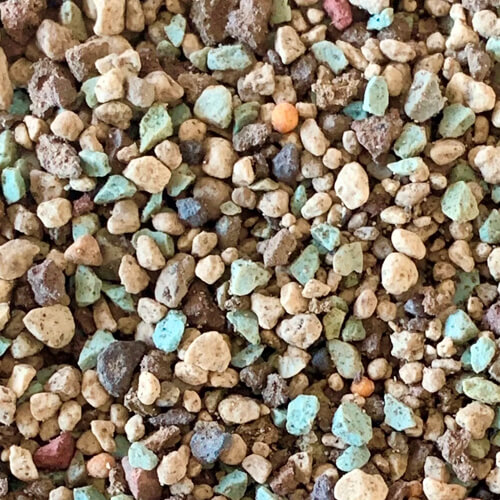
- How it Works: A potting mix of zeolite, washed pumice, light lava, and slow-release fertilizer.
- Benefits:
- Balanced Environment: Offers a perfect 45% water to 55% air ratio for root health.
- Nutrient-Rich: Includes slow-release fertilizer, providing initial nutrients.
- Disease and Pest Resistant: Minimizes common plant diseases and pests.
- Ideal For: A wide range of plants, especially those requiring stable nutrient and water levels, like citrus trees and herbs.
- Fertilization: Lechuza Pon includes slow-release fertilizer, reducing the need for frequent additional feeding.
- Monitoring Moisture: Ensure the mix is not too wet or too dry; it should remain evenly moist.
- Disease Prevention: Watch for signs of mold or fungus, particularly on the surface, and remove any affected parts promptly.
Read more: What is Pon?
3. Perlite
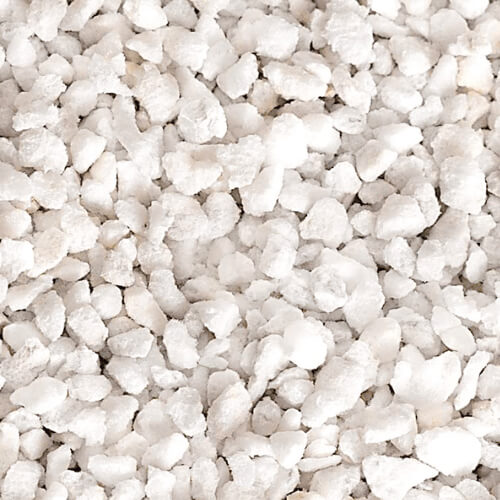
- How it Works: Perlite is a form of volcanic glass that is expanded under high heat to create a lightweight, porous material.
- Benefits:
- Improves Drainage: Helps prevent waterlogging by enhancing soil drainage.
- Increases Aeration: Creates air pockets in the mix, essential for root health.
- Versatility: Can be mixed with other potting mediums to improve their properties.
- Ideal For: Plants that need well-draining soil and for rooting cuttings due to its sterile nature.
- Aeration Check: Ensure Perlite is not compacted around roots to maintain its aeration benefits.
- Watering Practices: Be mindful of watering frequency, as Perlite dries out faster than other mediums.
- Mix Refreshing: Occasionally refresh the mix or blend it with other mediums to maintain its structure and benefits.
4. Pumice

- How it Works: Pumice is a type of volcanic rock that is naturally porous, making it ideal for holding air and water.
- Benefits:
- Excellent Drainage and Aeration: Similar to perlite but heavier, so it stays in place better.
- Nutrient Retention: Holds onto nutrients and releases them slowly to the roots.
- pH Neutral: Does not alter the pH of your watering solution.
- Ideal For: Plants that are sensitive to overwatering and need a stable growing medium, like succulents and cacti.
- Water Retention: Pumice retains water well, so adjust watering schedules to prevent overwatering.
- Root Inspection: Regularly check the roots for signs of rot or stress, as Pumice can hold moisture close to the roots.
- Mix Integration: Blend Pumice with other materials like LECA or Perlite to tailor the mix to specific plant needs.
Read more: Grow plants in semi-hydro with Pumice
The Role of Zeolite and Porous Materials
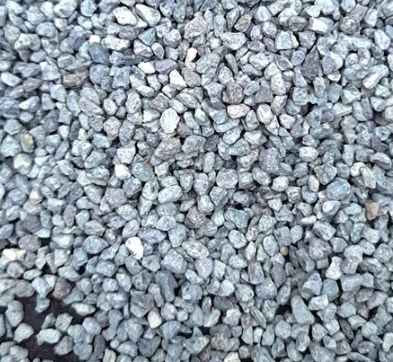
One of the standout features of the Pon semi-hydroponic mix is the inclusion of Zeolite. This exceptional aggregate plays a pivotal role in detoxifying and stabilizing the growing environment.
Its unique capacity to absorb excess ammonia and potassium, which are often the culprits behind root burn and plant demise, makes Zeolite an indispensable component of the mix.
The core of potting mix is formed from highly porous and adaptable materials, unrivaled in their efficiency at absorbing and distributing nutrients and water throughout the container. These aggregates lack a uniform shape, creating natural nooks and crannies that are ideal for root development.
The larger, porous structure provides solid support for primary roots, essential for plant anchorage, while the finer micro-structure caters to the delicate, secondary roots as they navigate and grow along these surfaces.
An important aspect of these materials is their ability to moderate the flow of nutrients and water. This slight deceleration ensures that plant roots are not overwhelmed by excessive nutrients or water, significantly enhancing air circulation within the pot and promoting root health.
Nutrient & Fertilizer
Most of the semi-hydro potting mix does not come pre-loaded with fertilizer. This gives you the freedom to add our Slow Release formula or a fertilizer of your choice.
We understand that many gardeners have their preferred fertilizers, and we encourage using what works best for you and your plants.
For those opting for Slow Release fertilizer, it’s designed to support your plants for 8-9 months with essential nutrients and minerals. Once the initial period is over, you can easily replenish the nutrients with a refill pack, ensuring your plants continue to receive the nourishment they need to flourish.
Choosing the Right Mix for Your Plants
Selecting the right semi hydro mix is crucial for the health of your plants. Consider the following factors:
- Plant Type: Some plants prefer a specific type of mix due to their root structure and water needs.
- Water Retention Needs: Plants that require more moisture may benefit from mixes with higher water retention.
- Aeration Requirements: Ensure the mix provides adequate aeration, especially for plants prone to root rot.
Transitioning to Semi Hydro Potting Mix
Transitioning plants from soil to a semi hydro mix involves carefully removing soil from the roots and choosing an appropriate mix. Start with younger plants or propagations, as they adapt more easily.
Read more:
Watering in Semi-Hydroponics
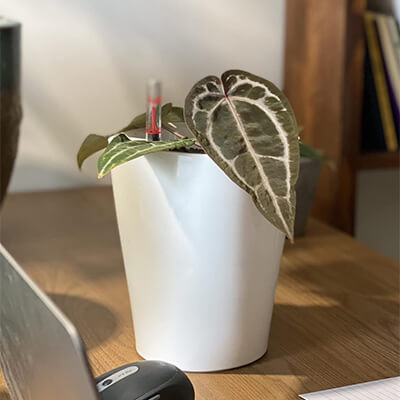
Understanding the Basics of Watering in Semi-Hydro Systems: Watering in a semi-hydroponic setup is straightforward and efficient. The key is to maintain the right water level in your planter. If you’re using self-watering planters, ensure the built-in reservoir is filled appropriately. Alternatively, for clear pots with good drainage, keep them submerged about a quarter of the way in water. This setup optimizes both water and nutrient uptake, ensuring your plants’ roots are well-hydrated.
Regular Flushing is Crucial: It’s vital to flush your pot every few weeks. This process involves running water through the potting medium to remove any buildup of salts from hard water and nutrients. Neglecting this step can lead to root burn, a common issue in semi-hydroponics that you’ll want to avoid.
Ease Into Semi-Hydroponics with Simple Experiments: If you’re new to semi-hydroponics and feeling hesitant, start with some easy experiments. Plants like Philodendron, Monstera, and Alocasia are excellent for beginners. These trials will help you become familiar with and comfortable in this growing method. While similar to soil-based growing in many ways, semi-hydroponics, when done correctly, can elevate the growth and health of even the most demanding plants.
Maintenance and Care Tips
- When caring for plants in semi-hydroponics, the type of potting mix used plays a pivotal role. For example, plants in LECA require careful monitoring of water levels and occasional rinsing to prevent salt buildup.
- Perlite and Pumice mixes, known for their excellent drainage, may require more frequent watering but ensure better prevention against root rot.
- Regular flushing prevents salt buildup and maintains a healthy growing environment.
- Unlike soil, semi hydro mixes often don’t contain nutrients, so regular fertilization is necessary.
Advanced Care Tips for Semi Hydroponic Plants
1. Monitoring Plant Health:
- Regularly inspect plants for signs of stress or disease.
- Adjust watering and nutrient schedules based on plant responses.
2. pH Balancing: Monitor and adjust the pH of your nutrient solution to maintain a neutral level, essential for optimal nutrient absorption.
3. Temperature and Humidity Control: Ensure your plants are in an environment with suitable temperature and humidity levels, crucial for healthy growth in semi-hydro setups.
DIY Semi Hydro Potting Mix Options
Creating your own semi hydro mix can be both economical and rewarding. Here are some DIY options:
1. Homemade Pon:
- Recipe: 4 parts pumice, 2 parts lava, and 1 part zeolite.
- Optionally, add slow-release fertilizer for initial nutrient supply.
Read more: How to make DIY Pon
2. Custom LECA Mix: Blend LECA with smaller aggregates like perlite or vermiculite to improve water distribution and root development.
3. Mixed Media Approach: Combine different semi hydro mediums based on specific plant needs, such as aeration or moisture retention.
Customizing Semi-Hydro Potting Mixes for Specific Needs
1. Customizing Mixes for Plant Types:
- Adjusting for Water Needs: For plants requiring more moisture, like tropical plants, blending LECA with Perlite can improve water retention while maintaining good drainage.
- Enhancing Aeration: Adding Pumice to Lechuza Pon can increase aeration, beneficial for plants with sensitive root systems such as African Violets.
2. Creating Tailored Blends:
- For Delicate Plants: A mix of fine Perlite and Pumice can provide gentle support for delicate or young plants.
- For Larger Plants: Combining coarse LECA with Lechuza Pon can offer the stability and nutrient richness needed for larger, more demanding plants.
3. Balancing Moisture and Aeration:
- Mix Proportions: Adjusting the proportions of Perlite and Pumice in LECA or Lechuza Pon can fine-tune the balance between moisture retention and aeration, catering to the specific needs of different plant species.
4. Experimenting with Mixes:
- Trial and Error: Don’t hesitate to experiment with different combinations to discover what works best for your plants. Each plant’s response can guide you in refining the mix.
- Observation is Key: Keep a close eye on how your plants react to different mixes and adjust accordingly.
Troubleshooting Common Issues in Semi-Hydro Potting Mixes
1. LECA (Lightweight Expanded Clay Aggregate):
- Issue: Algae Growth
- Solution: Reduce light exposure to the LECA and ensure proper cleaning between uses.
- Issue: Dry Patches
- Solution: Ensure even watering and consider using a wicking system to maintain consistent moisture.
2. Lechuza Pon:
- Issue: Mold Development
- Solution: Improve air circulation around the plants and remove any visible mold. Avoid overwatering.
- Issue: Nutrient Imbalance
- Solution: Regularly check and adjust nutrient levels, especially after the initial slow-release fertilizer is depleted.
3. Perlite:
- Issue: Compaction and Reduced Aeration
- Solution: Regularly fluff up the Perlite to maintain its airy structure and mix it with other mediums if needed.
- Issue: Rapid Drying
- Solution: Adjust watering frequency and consider blending with more moisture-retentive mediums.
4. Pumice:
- Issue: Overwatering Symptoms
- Solution: Adjust watering schedules based on the plant’s response and mix Pumice with faster-draining materials.
- Issue: Insufficient Nutrients
- Solution: Supplement with liquid fertilizers, as Pumice does not hold nutrients as effectively as other mediums.
Best Plants for Semi-Hydroponic Growth
While almost all indoor plants can adapt to semi-hydro, some are particularly well-suited:
- Alocasia: Super-thrive in semi-hydroponics. Remove all of your stress.
- Anthuriums: Excel in semi-hydro environments due to their high humidity and moisture requirements.
- Orchids: Thrive due to the excellent aeration and moisture control.
- Philodendrons: Benefit from the constant moisture and air flow.
Conclusion
Semi-hydroponics offers plant lovers an innovative, efficient way to grow their favorite plants. By understanding the various types of semi hydro potting mixes and their appropriate applications, gardeners can optimize plant health and growth.
Whether you choose a commercial mix like LECA or Lechuza Pon, or decide to create your own DIY mix, the key to success lies in understanding your plants’ unique needs and adapting your care techniques accordingly.
Semi-hydroponics is not just a growing method; it’s a journey of discovery and learning, offering a closer connection to your plants and their needs. Embrace the challenges and joys of this unique gardening technique, and watch as your plants flourish in their new, innovative environment.

